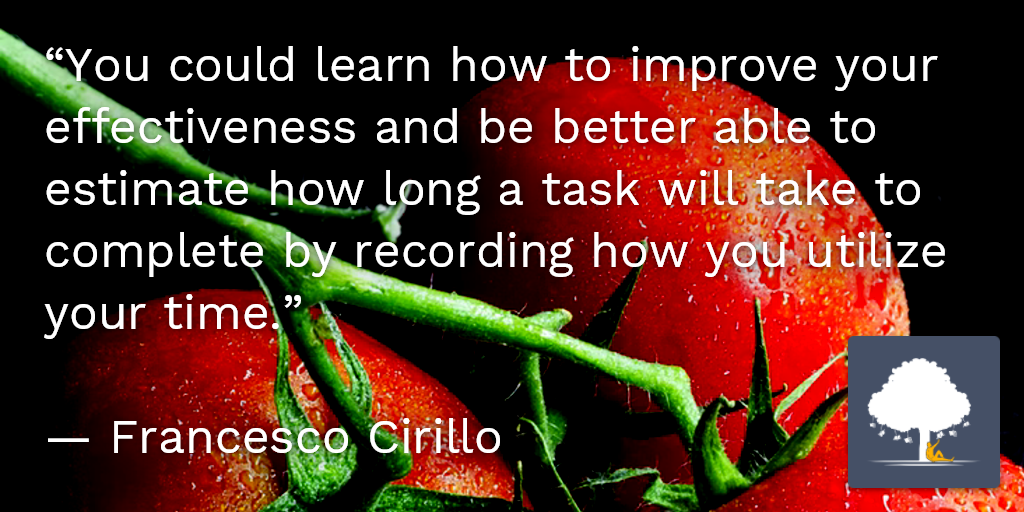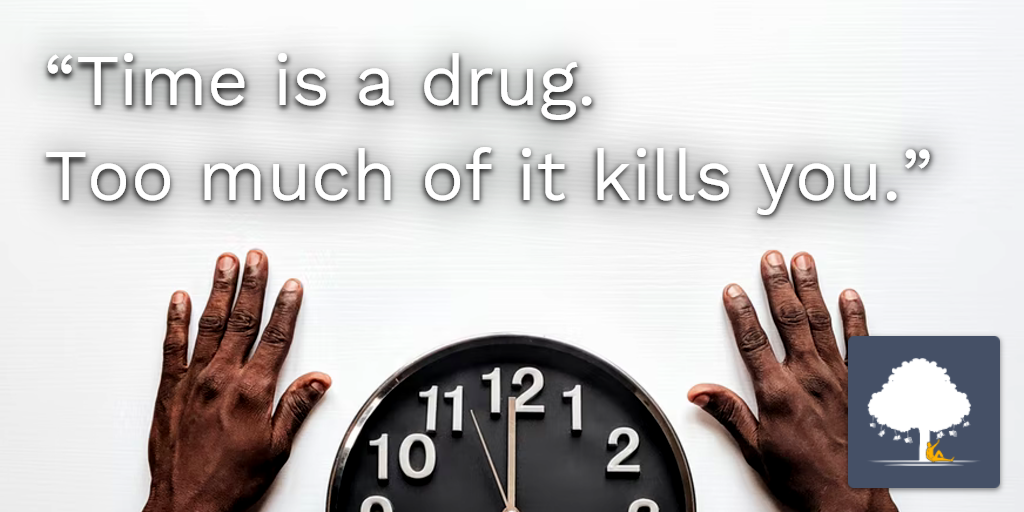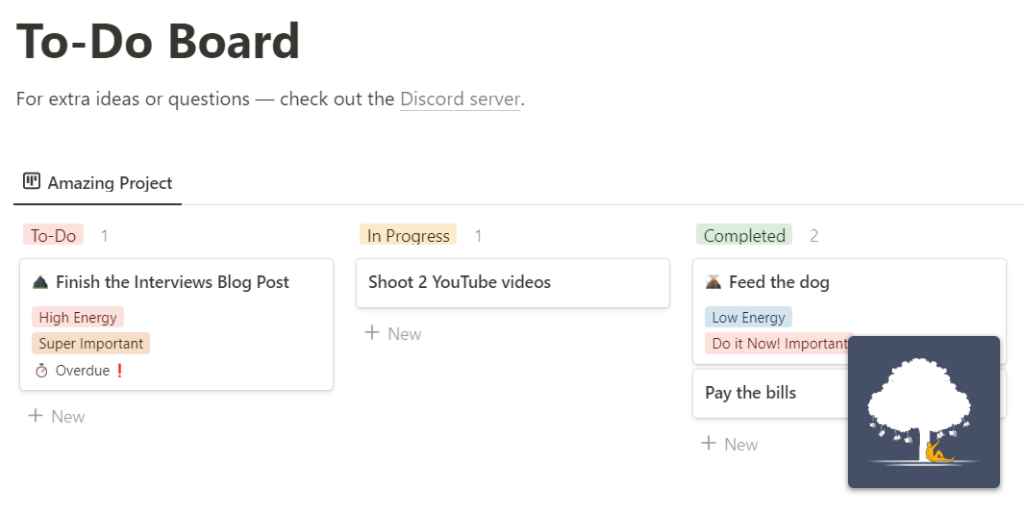The legendary Pomodoro Technique. If you read any amount of information on productivity, it’s very likely you already know what that is.
In this post, I’ll be focusing on both what it is and some advanced use-cases that can bring your Pomodoro game from beginner to expert in a flash.
Let’s get straight to it!
What is the Pomodoro Technique?
The 1990s. Francesco Cirillo is a student doing what all students do — studying. It’s just the beginning of his entrepreneurship career, coach, and consulting business.
What he didn’t know at the time is that the small kitchen timer he used (shaped like a tomato) to time his studying sessions will change not only his, but many people’s lives.
This was the beginning of the Pomodoro Technique.
The basic idea behind the Pomodoro Technique is rather simple:
- Choose the task that you want to do.
- Set a timer to 25 minutes. Here’s a link to the timer above (finish reading this though, there’s more to using the Pomodoro technique than the timer).
- Work on only that task until the timer rings.
- Take a short 5-minute break. Note: Everything until here (going through steps 1 through 4) is considered 1 Pomodoro.
- Every 4 Pomodoros take a longer break (15-20 minutes).
Pretty simple right?
Work, study, or create — turn off your notifications and focus as deeply as possible. The basics.
Then, take a break. Breaks help retention, recollection, and problem-solving, after all (start from this paper if you want to delve into that).
A simple, yet highly effective combo. What could go wrong?
A lot, surprisingly.
Common pitfalls with the (Advanced) Pomodoro Technique

Both the typical and the advanced Pomodoro Technique share the same pitfalls. For you to apply the technique effectively, you’ll have to make your way around them.
Imagine you’re having a nice dinner — steak and potatoes and a cake that spikes your insulin by just looking at it. The good stuff.
I’d imagine, you don’t want frosting all over your potatoes and steak — there’s a good chance it’ll ruin the whole thing.
You also probably don’t want to eat one bite of potatoes and then one bite of cake one after the other (like my brother; I just don’t get him).
Pomodoros are the same. You don’t want to split the work into little pieces by spreading frosting all over it (by getting interrupted). Note: Remember, one repetition of planning, work, and a break is one Pomodoro.
First, let’s deal with:
Preventable interruptions
Getting interrupted while you work is taking a lot away from the quality of your work. Read my post about how fast you should be answering your email if you want more info on that.
A lot of those interruptions are completely in your control. Most apps and websites make it a bit difficult to get rid of them, but it is certainly possible. The two general pieces of advice I give most often are applicable here as well:
- Turn off your notifications. Notifications are stealing your attention. You either need to train yourself to never pay attention to them (which is quite difficult) or, more easily, turn them off.
- If your task allows it — disconnect from everything and everyone. The fewer outside factors that can distract you, the better. Disconnecting also highly reduces the chances you’ll distract yourself.
Both of those are often overlooked by people looking to get more done and I can’t stress how often they have been the issue for one of the people I mentor or teach. Start with them!
That brings us to:
Urgent interruptions
There are two types of urgency you’ll face:
- “It needs to happen right now because I feel like it” urgency — someone has a strong preference for how a set of things should be ordered in time. I would ignore those if it is possible. Hint: You might want to rethink your environment if those happen and are impossible to ignore.
- “It needs to happen right now because of important reasons” urgency — something happened that should drastically shift your priorities.
If you have the latter on your hands (or if you can’t ignore the first kind) — you have to shift your attention. Do it. End the Pomodoro then and there and focus on what matters at the moment.
Restart the Pomodoro after you have resolved the crisis. You might need to replan it for it to make sense, so do that if that’s the case.
Finally, we have:
People interruptions

Those might be the most difficult ones to face but Francesco gives us a system that makes the process far easier:
Inform, Negotiate, and Call Back
- Inform the person/people about your intention and current work. Say the obvious things and highlight the importance of focusing on this task to yourself. Short & sweet does it here.
- Negotiate a different time at which you can assist. To make this easier on your counterpart/s, you can schedule that follow-up discussion immediately.
- Call back — call back the other party when you finish your Pomodoro.
Of course, in case of urgency, you might want to end your Pomodoro then and there but in most cases Francesco’s approach is perfect.
That brings us to the best part:
Getting Advanced — The Advanced Pomodoro Technique
When trying to improve on something you have to take into account its’ strengths before haphazardly changing it. Here are the strengths of the Pomodoro Technique; it is:
- Practical and simple.
- Massively reducing the number of things you should think about and focus on.
- Including planned breaks.
- Helpful for you to organize your tasks.
- Helpful for you to measure your tasks — writing this article took me 6 Pomodoro’s.
We need to keep all of those in place for any improvement to be a real improvement.
So, the Advanced Pomodoro Technique puts a twist on two concepts:
- Duration — adjusting both the session’s and break’s duration.
- Planning — changing up the planning and experimenting with different approaches towards planning.
How does a Pomodoro’s duration affect your productivity?

Depending on the task you plan to do during your Pomodoro, you might want to change its duration. Let’s examine why.
If you’re studying, Francesco’s approach is perfect. And no wonder — he created it as a student, studying.
While studying, the most important part is retention. You want to remember as much of what you studied as possible.
Remembering or long-term memory formation works in two stages:
— You “create” the memory in place. Your hippocampus gets the information from your short-term memory and rewires your brain to remember it. Breaks can give it the time it needs to do so.
— You “remember” the memory. Recollecting the memory strengthens the connections between neurons and you remember the thing better. After the break, while you’re starting your next Pomodoro, you’re going through this process. This speeds up learning even more.
That simply means:
Pomodoros are one of the strongest learning techniques you can use.
Now, if your focus is not learning I suggest two alternatives to try:
The Problem-Solving 45/15 Pomodoro
The idea here is simple — instead of working for 25 minutes, you’ll be working for 45 and instead of taking a 5-minute break, you’ll be taking a 15-minute one.
This is extremely useful in case you need to solve a tough problem.
25 minutes are not always enough time to work out a difficult problem and come up with a meaningful solution.
Some problems simply require deeper focus to solve. If you’re tackling something particularly challenging, this is the approach for you.
The benefits are two-fold:
- You get more time on the problem. More time means deeper focus and a lessened effect of attention residue from what you did previously.
- You get more time off the problem. If you guard this time from notifications and distractions and let your mind wander — you’ll put your subconscious to work to help you solve your issue.
Empowering your subconscious mind to solve a problem is something we’re touching on this, but it will be extra helpful in the following technique:
The Creative 15/15 Pomodoro
When people think of 15 minutes of work and 15 minutes of rest after said work, they often think “lazy”. This can be the case and using a similar technique can be a fake pretense to just do less. But, if you use it correctly, it can be a powerful weapon in your getting more done arsenal.
When you’re faced with more practical and tangible problems, the more work you do, the more you understand your goal and process. Practice makes better.
But, when you’re faced with a problem that’s deeper and far clearer, the answer is not always doing more. Sometimes the answer is doing less.
Imagine you’re rethinking your mindset, beliefs, or making a significant decision impacting your life. You spend some time on the practical aspects — breaking the problem down, making pro/con lists, or journaling about it. Anything to make sense of the massive amount of reprogramming you need to do to your brain to decide.
Now, if you try spending hours on those practical aspects of that decision, you might feel productive for a while but at the end of the day, you’ll just feel drained and as if you did nothing meaningful.
In those moments you need to do less.
That’s where this technique comes in. It forces you to have regular and long breaks.
Here is how to do it:
- Figure out the problem you want to solve. It’s best for it to be something profound — this Advanced Pomodoro Technique becomes less and less valuable the more trivial the problem becomes.
- Spend 15 minutes on a practical aspect of the problem. Plan one of the possible outcomes. Make a pro/con list. Brainstorm.
- Then spend 15 minutes off the problem. Don’t go on social media and don’t get distracted still. Just do nothing and let your mind wander. Walk around. Make yourself a cup of tea.
- Repeat this for an hour or so and then stop working on the problem for a while. You don’t want to burn out by trying to solve something too complex too fast.
Using this you will be able to tackle some of the harder problems in life. Ones that not that many techniques can help you with.
Finally, we have the:
The KanBan Pomodoro

The planning part of an effective Pomodoro is something that I often dread. To make the process easier, I use a ToDo Board to batch my planning for a calm weekend morning.
The concept is simple — I use a variation of a KanBan board (a very cool Japanese organizational system — read more here) to create easy-to-use and track micro-tasks. Then I use my Advanced Pomodoro Technique (the 45/15 version) to go through said tasks.
I don’t plan on a certain task at the beginning — I only make sure I have enough work for that interval. 3 or 4 tasks usually suffice.
So, you can preplan your work and have it broken down in your To-Do list, KanBan Board, or To-Do Board, and then go through it task by task during your Pomodoro sessions.
Optionally, you might even not plan for one task per one Pomodoro but go through several ones at once. It’s important to note that this isn’t as easy as having one task for one Pomodoro and you’ll lose some effectiveness because of that. But, it is a good advanced approach that can help you fit the technique to fit you or your schedule better.
This is a deceptively simple modification, but it can help you with 3 things:
- Having dedicated planning sessions and dedicated work sessions can help improve both. While you’re focused on the details (e.g. the actual work), it’s much harder to keep a good perspective. You’re not aligned with your why as much. While you’re focused on planning, you can miss critical implementation details (because, you’re looking at else — the big picture). Try separating them and see what kind of an effect that has on your productivity — it might be massive.
- Having the autonomy to pick a task based on your current energy level. While planning a task it’s often the case that you realize you don’t have quite the energy for it. Having several tasks ready to go makes sure you are not faced with that issue. As a bonus, when you get started with the first easier task, it’s much easier to tackle the next, much harder task.
- Using something more sophisticated than a to-do list can help you effectively collaborate with others on your tasks. It can make your progress visible plus it can use a Pomodoro as the unit in which you measure how long something takes (you can do that part alone, too; it’s pretty useful).
That’s that.
Fin — The Advanced Pomodoro Technique
The Pomodoro Technique is an excellent tool to get more done. But it’s also just a starting point.
Use what you learned in this article and start playing with the concept. Try different work durations and different break durations. Mix up your planning.
Don’t take this technique as a finished thing — it is certainly not. It is one of the best starting points to start your optimization journey, but it’s not the end line.
Feel free to use my timer (or Forest; or just your phone’s timer) and start clocking in Pomodoros. The more you do, the more subtle nuances you’ll find on how to do them better.
I’d love to know how you organize your time in the comments below!
Stay Awesome,
— Jordan










